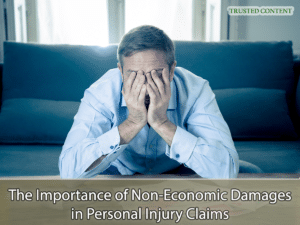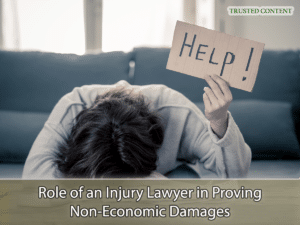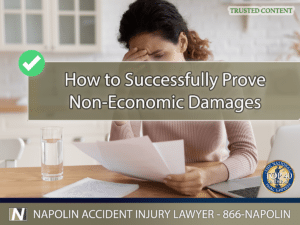How to Successfully Prove Non-Economic Damages in Personal Injury Claims
Introduction to How to Successfully Prove Non-Economic Damages in Personal Injury Claims
Personal injury claims represent a quest for justice, a means for victims to receive compensation for the harms they've endured. While economic damages, such as medical bills or lost wages, are relatively straightforward to calculate, the non-economic aspect requires a different approach. This is the realm of pain, suffering, and emotional distress—intangible yet significant aspects of a personal injury claim.
Understanding Non-Economic Damages
Non-economic damages refer to the intangible losses an individual may experience as a result of an injury. These include pain and suffering, emotional distress, loss of enjoyment of life, disfigurement, and loss of companionship. Unlike economic damages, which have concrete dollar amounts attached, non-economic damages don't come with receipts or invoices, making their quantification a complex task.

The Importance of Non-Economic Damages in Personal Injury Claims
The Importance of Non-Economic Damages in Personal Injury Claims
While non-economic damages may seem abstract, they are a crucial element of a comprehensive personal injury claim. They acknowledge the emotional, psychological, and personal toll an injury can take, often representing a significant portion of the total compensation awarded. For many victims, these damages are the most profound impact of the incident, extending beyond the physical injury and financial cost.
Proving Non-Economic Damages
The burden of proof in establishing non-economic damages rests with the victim. This process involves demonstrating the existence and extent of these damages, a challenge given their intangible nature. Credible testimony, expert witnesses, and even photographic evidence can all play a part in proving these less tangible losses.

Role of an Injury Lawyer in Proving Non-Economic Damages
Role of an Injury Lawyer in Proving Non-Economic Damages
This is where an injury lawyer steps in, bringing their knowledge, experience, and resources to help victims effectively establish and prove non-economic damages. They can guide the collection and presentation of evidence, engage appropriate expert witnesses, and build a compelling case for the reality and extent of the victim's non-economic damages.
Practical Steps in Proving Non-Economic Damages
While the specifics can vary based on the case, some practical steps can be taken. Keeping a personal journal of pain, suffering, and emotional status can be a powerful piece of evidence. Seeking professional mental health support and documenting these sessions can also lend weight to claims of emotional distress. Gathering witness testimonies from friends, family, or co-workers who can attest to the changes in the victim's life post-injury can provide valuable supporting evidence.

How to Successfully Prove Non-Economic Damages in Personal Injury Claims
Conclusion to How to Successfully Prove Non-Economic Damages in Personal Injury Claims
The journey of proving non-economic damages in a personal injury claim can be arduous and complex. Yet, with the right approach, victims can adequately present the full impact of their injuries. At Napolin Accident Injury Lawyer, we have extensive experience in this field. We stand ready to provide guidance and support through a free consultation. Dial 866-NAPOLIN and allow us to assist in navigating this challenging journey, advocating for rightful compensation and ensuring justice is served.
- Understanding Uber Accidents and Insurance Coverage Periods in California - April 8, 2025
- A Guide on Red Light Auto Accidents in California - August 14, 2024
- Self-Representing in a California Personal Injury Claim - August 13, 2024
